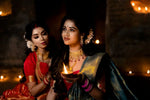
Redefining Asian Beauty Standards: A Step Towards Sustainable Elegance
, by Shopify API, 5 min reading time

, by Shopify API, 5 min reading time
In an increasingly globalized world, Asian beauty standards are being re-evaluated. In this blog, we'll explore how these new ideals not only promote diversity but also foster sustainability. Through a combination of tradition and modernity, we're redefining what it means to be beautiful in Asian culture.
Since ancient times, beauty standards in Asia have been influenced by cultural and contextual factors. This segment will analyze how these ideals have changed over time, affecting the perception of what is considered beautiful.
Throughout history, beauty has been shaped by elements such as cultural narrative, literature, and art. Each era has presented a unique vision of aesthetics, from Buddhist sutras describing spiritual beauty to modern pop culture influences. Thus, we have witnessed not only an aesthetic evolution, but also a growing awareness of how these perceptions affect people.
The influence of the media and globalization cannot be underestimated. Today, we are exposed to a constant exchange of ideas and aspirations. Social media, for example, has multiplied the voices that challenge traditional ideals. This phenomenon has led to the emergence of new standards that are not only more inclusive but also celebrate diversity.
Traditional beauty standards can often be restrictive. This section will deconstruct these ideals, highlighting how they can exclude and alienate many.
The imposition of rigid standards has led to an identity crisis among young people, who feel pressured to meet unrealistic expectations. For example, straightened hair, light skin, and extreme thinness have been considered the pillars of beauty in many Asian cultures. However, this approach has marginalized those who do not fit these parameters.
It's crucial to establish an open conversation about the mental health of those who are constantly bombarded with images of an unattainable ideal. By demystifying these standards, we can begin to value the unique and authentic characteristics that each individual brings. In this pursuit of real and personal beauty, the door to acceptance and self-expression opens.
Beauty brands are beginning to recognize the importance of diversity in their campaigns. Here, we'll discuss how changes in advertising and product formulation are driving this transformation.
The beauty industry, traditionally focused on a single ideal, now faces the need to adapt to a market demanding inclusivity. Instead of promoting a single concept of beauty, companies are expanding their range of representation to include people of different ethnicities, sizes, and styles. This transition not only reflects societal changes but also responds to consumer demand for authenticity.
With the rise of influencers from diverse backgrounds, those who represent a broader range of experiences have gained immense popularity. Advertising campaigns that celebrate diversity are not only good for sales, but also contribute to a cultural shift in the perception of beauty, thus encouraging a more holistic and connected approach between the industry and its consumers.
Sustainability is at the heart of the new beauty trend. In this section, we'll explore how sustainable practices are driving a shift in consumer expectations and production practices.
As awareness about climate change and pollution grows, so does the demand for ethical and eco-friendly beauty products. Brands are adopting more sustainable practices, from using organic ingredients to recyclable packaging. This new perspective is not only helping the environment but also redefining what it means to be "beautiful" in a broader context.
The focus on sustainability also invites consumers to reflect on their own purchasing decisions. Elegance is now measured not only by appearance, but by the impact those products have on the world. As a result, we're seeing a rise in brands prioritizing transparency and social responsibility, paving a new path toward beauty that's not just external, but also internal.
We'll share examples of people and influencers who have embraced these new beauty standards, inspiring others to do the same and creating a positive movement in society.
A notable example is the case of artists and models who have challenged the norm and become icons of inspiration. Pioneers like Yumi Nu, whose unique beauty has paved the way for recognition of differences in Asian beauty, show how authenticity can genuinely resonate with the public.
These success stories are crucial because they demonstrate that when traditional beauty standards are challenged, a space can be created that fosters acceptance. With each step forward, a support network is formed that encourages people to celebrate their individuality and share their personal journey, contributing to the creation of a new beauty narrative.
We'll conclude the blog by reflecting on what the future might hold for beauty standards in Asia, advocating for greater inclusivity and authenticity in all forms of self-expression.
The future looks bright for Asian beauty, full of possibilities for innovation and self-expression. Instead of following archaic standards, new voices are claiming their space and advocating for diversity that encompasses everything from skin tone to life experiences. This shift may well be the beginning of an era where beauty is as diverse as humanity itself.
Ultimately, true beauty lies in self-acceptance and the ability to be authentic. As we move toward a new beauty paradigm in Asia, it's critical to maintain an open conversation about inclusivity, ensuring that all identities are welcomed. Because only then can we build a community where everyone feels represented and valued.
The redefinition of Asian beauty standards is not just an aesthetic movement, but a statement about sustainability and acceptance. By embracing diversity and promoting a more conscious approach to beauty, we are taking an important step toward a more inclusive and harmonious future.